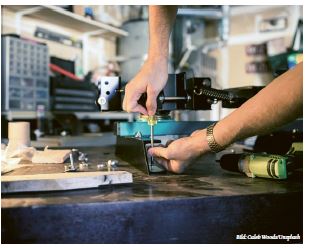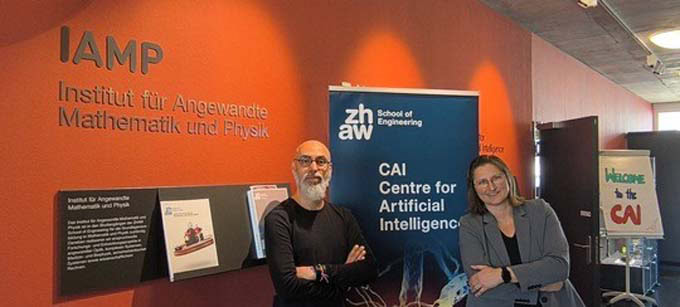Is screwing really that difficult?
Anyone who knows how to use a screwdriver can screw things together. This may be true in private everyday life. However, the failure of screw connections can lead to considerable risks, including danger to life and limb and the environment. Therefore, screwing must be learned correctly. A VDI guideline deals with the systematic and needs-based qualification of personnel in the field of screwdriving.

In October 2018, the new VDI guideline on the subject of qualification in bolting technology was published and came into force (VDI/VDE 2637 Part 1). The guideline shows which minimum qualifications persons who are directly or indirectly involved in bolting technology must have in order to be allowed to create bolted joints. For many joining processes, such as welding or bonding, minimum requirements for persons working in these areas have already existed for a very long time. The advantage of such clear definitions is that they regulate the requirements and qualifications needed to reliably create a joint. Before the guideline VDI/VDE 2637 came into force, there was no comparable regulation in the field of bolting technology. In this respect, any person without any prior knowledge would have been allowed to create bolted connections.
Background
Voices were raised in the machine and automotive industry demanding a minimum qualification for bolting technology as well. Thus, the new guideline was created with a considerable scope: 52 qualification modules were defined for different stakeholder groups.
VDI/VDE 2637 is a guideline and not a law. Nevertheless, there is an obligation to implement the product liability laws and the regulations for placing products on the market. According to these, the current state of the art, which is defined by the 52 qualification modules, must be complied with.
Advantages of VDI/VDE 2637
Early investment in the qualifications of your employees is a key component for the quality and safety of your products. With the given qualification requirements of the employees regarding their activities, the guideline is a very valuable support to be able to process orders according to the latest state of the art. The advantages for your products are obvious: quality, safety, reduction of maintenance intervals, lightweight construction, cost optimization, risk minimization and utilization of the possible technical potential. In the event of an accident resulting in major damage to property or even personal injury, the product concerned is tested and examined to ensure that it complies with the current state of the art. If deviations from applicable guidelines are found, this can lead to a massive loss of reputation and major financial damage.
Influences of a bolted connection
VDI/VDE 2637 lists a wide range of influences on a bolted joint. These systematic and random influencing variables are summarized in the so-called five M-sizes: Man - Machine - Method - Material - Environment.
This is not only about the design or calculation of a bolted joint, but also about many other influencing factors such as the friction of head contact and thread, material strengths and interfacial pressures of component materials, setting processes, design, manufacturing, processing, bolting process, bolting tool, machine capability inspection, process capability inspection, etc. It is already known from quality requirements that the used screwdriving tools have to be checked regularly. In principle, this is not new, but the guideline now goes into more detail about the qualifications of employees who carry out and evaluate inspections, for example of tools, screw connections or screw connection processes. It is precisely here that there are major sources of error that can be eliminated through targeted training. The guideline therefore does not regulate any technological questions concerning, for example, the design of bolted joints, topics relating to bolting tools, bolting processes or similar. Other VDI/VDE guidelines are available for this purpose. Among others, VDI 2230 on the calculation and design of bolted joints or VDI/VDE 2645 "Capability testing of bolting technology machines - Machine capability testing - MFU" should be mentioned here.
New challenge for employee training
The requirements for screwdriving technology have become and are becoming ever more stringent. In addition to VDI/VDE 2637, VDI 2862 was already published in February 2015 with the minimum requirements for the use of screwdriving technology and tools for industry depending on the risk posed by the screwdriving case and assembly process. The Bossard engineering team has been following the situation on the market for a long time and is facing up to these new requirements. Further training has been provided for the engineering team on site. As a result, a number of trained screwdriving engineers (DSV) and screwdriving technicians (DSV) with the necessary infrastructure are already available today and can provide customers with advice and support. Implementation in practice The increased requirements in bolting technology in accordance with the VDI/VDE 2637 directive can be taken into account in the new Bossard Academy. The 52 qualification modules are offered in bundled seminars for needs-based qualification for all stakeholder groups in bolting technology - employees as well as managers. The practice-oriented seminars are aimed at quick and easy introduction and implementation in practice.









